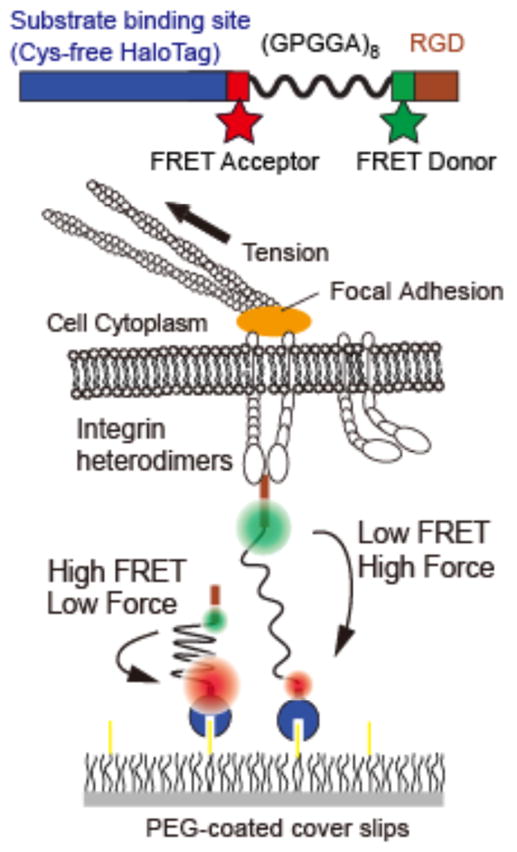Figure 1.

Experimental schematic. Sensors are attached to a PEG-coated coverslip using a cysteine-free HaloTag domain. The FRET pair flanks an elastic protein spring consisting of 8 repeats of the GPGGA amino acid sequence. The FRET acceptor ATTO 647N is attached using alkyne-azide click chemistry at the unnatural amino acid 4-azido-L-phenylalanine, and the FRET donor Alexa 546 is specifically attached at a unique cysteine (SI Materials and Methods). Cells are plated on a sensor-coated surface. Integrins engage the RGD domain and apply tension that pulls the FRET pair apart. High tension leads to low FRET.
